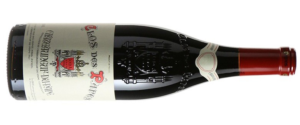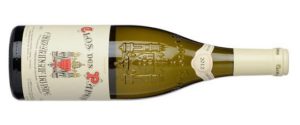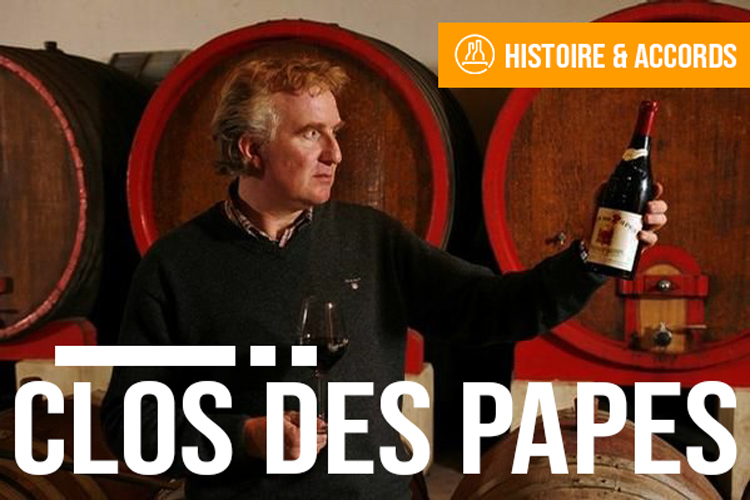? Clos des Papes is an estate full of history. Part of the heritage of the Châteauneuf-du-Pape appellation, it is a historic estate. The estate has always been owned by the Avril family, and produced its first vintage in 1896. In 1936, the estate donated much of its time to help create the Châteauneuf-du-Pape appellation. It is now Paul-Vincent, the fourth generation, who is in charge of the 32 hectares of vines, succeeding his father Paul, a great winemaker who gave the estate its letters of nobility. In fact, the estate vinifies only 3 cuvées, which are the result of blending their 24 parcels and, above all, of a huge amount of work in the cellar.
Le Clos des Papes boasts over twenty parcels of land planted with the appellation's different grape varieties. These parcels have already been farmed organically for ten years. After training at the Ecole de Beaune, Paul-Vincent first worked at Château Mouton Rothschild, then at Domaine Ott. After some experience at Caves Legrand and winemaking in Australia, he returned to the domaine with the aim of producing authentic, true and complex Châteauneuf-du-Pape wines. Le Clos des Papes is one of our partner estates. Every year, you'll find new allocations in stock on the site, available for immediate purchase.
The vine
The estate owns 24 different parcels.
Only 3 hectares are devoted to white wines. Grenache blanc, Roussanne and Marsanne are the three main grape varieties, complemented by Clairette, Bourboulenc and Picpoul.
For the reds, the remaining 21 hectares, over 60% of Grenache are planted, complemented by Mourvèdre and Syrah, and a minority of secondary grape varieties such as Counoise, Vaccarès and Muscardin.
As far as vinification is concerned, the wines are made as traditionally as possible. The reds are harvested by hand. The indigenous yeasts do their work in concrete vats. Then, after 12 months' ageing in tuns, the wines are bottled unfiltered.
For the whites, the grapes are harvested whole, including the bunch and stalk. All grape varieties are used in the vinification process. No malolactic fermentation, aging on lees, bottling without filtration.
Which vintages?
With around 72,000 bottles, 5,000 of which are white, Clos des Papes produces only one cuvée per color in Châteauneuf-du-Pape, but offers its fans a bottle that heralds the estate's beginnings, called "Le petit vin d'Avril".
Our perfect match with a Clos des Papes

As pure and simple as Clos des Papes redWe recommend pairing their red Châteauneuf-du-Pape with grilled prime rib and pan-fried mushrooms and chestnuts. Here, thehe blend is more complex. The domaine has decided to blend Syrah with Grenache, Mourvèdre, Carignan and Cabernet Sauvignon. It's a special blend, since it's made up of 2/3 of the year's harvest, but 1/3 of the vat comes from last year's blend. For this reason, it is naturally downgraded to Vin de France. It's best enjoyed young, to accompany aperitifs, charcuterie and barbecues with friends.
When and how to drink a Clos des Papes Rouge?
For the red wine, Clos des Papes blends the three main grape varieties, Syrah, Grenache and Mourvèdre, but uses a small percentage of indigenous varieties such as Counoise, Muscardin and Vaccarèse. The wine is not filtered, but simply fined with egg whites to remove the larger particles present in the juice. The wine is then aged for 15 months in tuns, to give it structure and offer wine lovers great ageing potential.
There's no question about it. You absolutely must wait and let your Clos des Papes age before drinking it in the right conditions. Its substance, power and tannic structure will only be at their best after 8-10 years of cellaring. Once you've had enough, you'll discover an opulent Châteauneuf-du-Pape, with aromas of black spices and red and black fruits.
An ideal red wine to accompany beef or game dishes!

Le Clos des Papes white with plenty of substance and character, we recommend an orange duck to give this white nectar a kick... The estate also produces a "petite" white and red called "Petit vin d'Avril".
A blend of Marsanne and Chardonnay. It's a rich white with a full, round mouthfeel. It's a generous, full-bodied wine that goes well with starters or poultry. This white wine is "special". The estate blends all the white grapes on the estate, without destemming them. The result is a rich, powerful white. To balance it all, no malolactic fermentation is carried out. This means that we try to preserve a certain tension in the wine, a sign of balance with the power and texture of the unstemmed grapes. The juice is reserved in vats with its fine lees. Bottling is by gravity (to avoid rushing the wine) with light filtration.
What to drink with a young white Clos des Papes?
If you choose to enjoy your bottle during the first 5 years following harvest, you'll taste a fresh wine, with floral and citrus notes. This is the perfect wine to accompany your finest shellfish, such as prawns or lobster. Mediterranean fish will also go equally well.
If you taste an "old" white Clos des Papes
You'll be presented with a different palette of aromas. The citrus notes will still be present, but will be enveloped in a rounder, honeyed texture. It's the perfect wine for white-fleshed fish, stuffed poultry or marinated red meat.
Now that you know all about the wines of the Clos des Papes, all you have to do is buy a few skittles and enjoy a tasting session.










